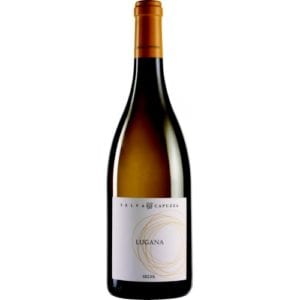Thousands of tourists head to this region every year, but the wines produced from here remain among Italy’s least known. That’s because most visitors to the southern shores of Lake Garda only see the “touristy” side of Lugana, and happily quaff the undemanding dry whites served in the local bars.
Lugana is a tiny region straddling Lombardy’s eastern border with Veneto, with just 100 producers covering 1000 hectares. Whilst it churns out a lot of tourist bar plonk, Lugana DOC (one of Italy’s first in 1967) does have a serious side to it.
Search the shelves of UK-based Italian wine specialists and you will find Lugana from dedicated producers like Ca’ dei Frati or Ancilla, who make deliciously minerally rich, dry whites with potential for ageing.
The local grape is turbiana which you are unlikely to have heard of, but recent DNA studies at Milan University have shown it to be the same as verdicchio bianco, according to grape geneticist Jose Voumailloz.
The vast majority of Lugana DOC is all about crisp, dry, unoaked white wine – to claim the DOC the wine must be made from 90 per cent turbiana.
Producers also experiment with longer ageing (Superiore with one-year maturation and Riserva with two year maturation), a tiny proportion of barrique-fermented whites, single vineyard wines – and surprisingly they also make late harvest sweet wine and traditional method fizz.
Some producers, such as Ca’ dei Frati, are also now experimenting with marzemino-based reds.
Overcropping and high training is as much a problem here as it is in neighbouring Soave. So what differentiates the serious producers from the tourist-focused wineries?
Anna Maria Dal Cero now runs the excellent 100 hectare Ca’ dei Frati estate with her siblings Igino and Gian Franco.
“We focus on careful clonal selection of the turbiana grape and try to preserve a fruity sensation in our wines,” says Dal Cero. She majors on high-density planting, low trellising and low yields in the vineyards and experiments with extended lees ageing (and oak ageing in her Brolettino wine) to add complexity.
Another woman at the helm in Lugana is Luisella Benedetti. Third generation, finance-trained Luisella has returned home to work the land at her family’s six hectare estate in Lugana di Sirmonia, which she named after her grandmother Ancilla. Her Lugana Ella and Lugana 1909 are classic examples of the depth of fruit concentration and intensity achievable from this terroir.
Other reputable producers to look for – who focus on getting the best out of the region – are Pablo Pisini, Selva Capuzza, Tiraboschi and Feliciana.
Tastewise, how does Lugana compare with better known Italian whites?
“Lugana is fuller bodied, fruitier and more structured than delicate Soave,” says Gianpaolo Giacobbo of Ca’ dei Frati. “This is due to Lugana’s combination of the warmer Mediterranean-style climate on the shores of Lake Garda.”
According to Philip Contini of Valvona & Crolla: “The area has a higher climate than the more easterly Soave, so the grapes are warmer during the day and are cooled by the breeze off Lake Garda at night, increasing the aromatic profile.”
The cool breezes blowing in from the Dolomites combined with the mineral-rich limestone clay glacial soils give rich, ripe fruits, whilst retaining acidity.
“Lugana has not been promoted or had the same PR thrown at it as Soave because it has a far smaller number of key producers – and as its redeeming qualities come from its temperature difference, there is only a limited area of vineyard space around Lake Garda, so no growth potential. Well that’s my theory,” says Contini.
So if you normally drink sauvignon blanc, chenin blanc or albarino – give lovely Lugana a try this summer.

With white blossom and lemon aromas, this is initially zippy and fresh with a deliciously full bodied, creamy, leesy texture on the mid-palate. It’s unoaked with beautifully judged pinpoint acidity, high quality and it was very popular with our tasters.
£11.50-£14.95, The Wine Society, Valvona & Crolla, Edinburgh; Luvians, Cupar & St Andrews; Woodwinters, Bridge of Allan & Edinburgh; Fine Wine Co, Edinburgh; The Cave Glasgow; Eusebi Deli, Glasgow
Floral, appley, with a creamy palate and good length, this is certainly good value, but it lacked the ripe fruit intensity of the higher priced Lugana in our tasting.
£9.99, Waitrose
Grapefruit and citric aromas dominated here, making this a very zesty, very minerally dry white. Fresh, linear and vivid with a lingering finish, it shows potential for ageing. Very good.
£16.59, Noel Young Wines, Cambridge; Wimbledon Wine Cellars; The Sampler

Very appley with nutty almond hints, this showed some minerality, and a vibrant, crisp freshness, rather than a rich creaminess.
£16.99, www.noblegreenwines.co.uk
• Join Rose’s Hidden Gems of Italy wine & charcuterie tasting in Glasgow on Friday 30 September, £42, www.rose murraybrown.com